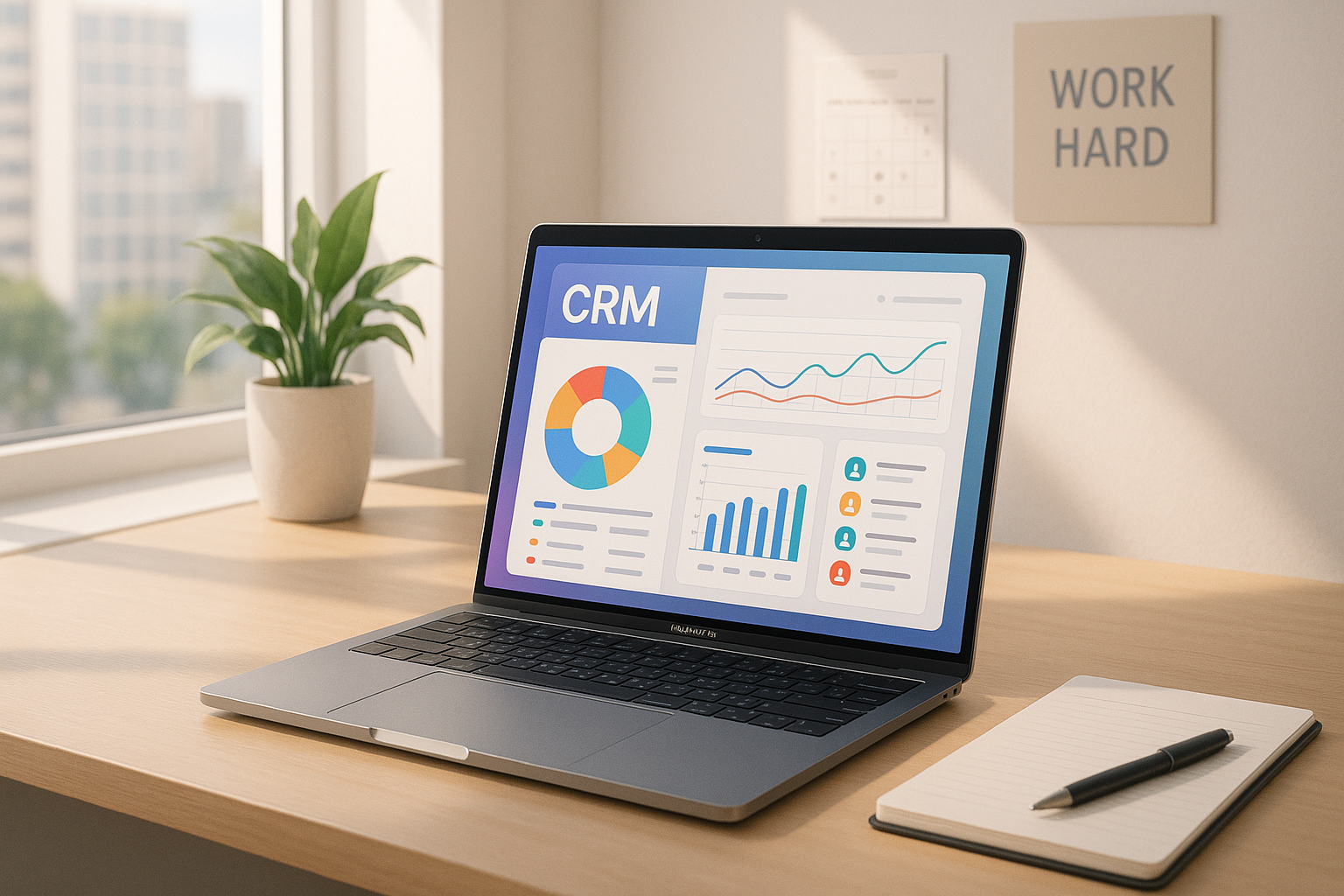Editor’s note: The shifting demands of the market and onerous requirements of customers lead to regular advances and improvements in the business performance. Recently the shaping company-client relationships become equally important to profitable sales and marketing processes. Today we are glad to present you a detailed interview with a reputable CRM strategist and consultant Paul Greenberg. He is the Managing Principal of the 56 Group, LLC, and a well-known author of best-seller ‘CRM at the Speed of Light’, who consults vendors and elaborates social and operational strategies of CRM implementation.
In the course of this interview, Paul reveals the tipping points of changes in the CRM industry, companies management, and customer demands, as well as throws light on the forthcoming tendencies in CRM strategies. So, let’s read this interview and figure out expert’s view on CRM innovations.
1.What are the outstanding innovations that filled up the gap between company and customer?
There weren’t any one or two outstanding innovations though I’d say the advent of the communications revolution of several years ago was the key change that we saw. That transformed how we communicate, what we communicate with, what we expect of the communication and our frequency and time of communication. It also changed how we create, distribute and consume information. The ability to reach potentially millions of like-minded individuals with your thinking on a subject e.g. a brand, became a significant driver in the empowering of customers. They could demand more of companies because
- a. they had more information about the brands and could make smarter buying decisions whether or not the brands gave them information and
- b. they could communicate their pleasure or displeasure quickly and effectively to a broad enough audience to have a measurable, even if temporary, impact on the companies that they were talking about.
But what that also awakened was a desire by companies to understand who these customers were in a better and more intimate way. Their reason for that desire was that if they understood the customers, then they would be able to provide the customers with the things that they personally desired from the company – with constraints, that is.
What worked to the companies’ advantage was that they had access to the data that their chatty customers were creating as well as the historic data that was a long time staple. While the customer may now have owned the voiceprint of the conversation, the footprint of the customer was available for collection by the company to help that company learn more about the customer, giving the companies the means to provide the customer with the more engaging content that they demanded. So the world changed dramatically, especially over the last 4-5 years.
Contemporary technologies are evolving to support the increasing need by the company to support the appropriate levels of engagement by the customer in the channels they want. That means that we are seeing the evolution of a customer engagement technology market that will be defined by a customer engagement technology ecosystem, not by a complete suite offered by a single provider.
No one technology company has the bandwidth, regardless of how large they are, to own every facet of the engagement market, because there are so many moving parts. For example, CRM had moving parts like sales, marketing and customer service and it was integrated with social channels. That created what is likely to end up a $25 billion market this year and according to Gartner, a $36 billion market by 2017. But customer engagement has far more moving parts – CRM is one of them as is ecommerce – they are the transactional and operational pieces, with CRM also playing the role of the system of record for customer data. But there is also enterprise feedback management, knowledge management, gamification, customer journey management, customer engagement analytics, community platforms and several others that comprise the overall customer engagement ecosystem or product matrix if you will. The evolution of this is characterized by some new software categories like customer journey management coming to market and old ones like enterprise feedback management and gamification rebranding themselves around some form of customer engagement technology. CRM systems of record are just starting to integrate with various systems of record and alliances between the companies are being forged as I write this.
What does the future hold? The one thing I can be sure of is that the customer engagement technology market is going to continue to be hot.
2. Your book CRM at the Speed of Light is considered to be the bible for companies employing CRM. Please, specify a few unwritten laws to create successful customer loyalty.
Remember that the customer wants something from you but they also want to control their level and terms of engagement with you. So if they want the engagement level to casual who are you to deny them? If they want it to be constant, okay with you.
Remember that you as a business have constraints – constraints of time, and budget, regulatory constraints, limits of knowledge etc. You can only offer individual customers as much as you can afford to but if you create the right mix of products, services, tools and consumable experiences, they will remain your committed customers for a long time to come. But you can’t give them everything they want.
Remember that the customer’s idea of value is different than the company’s idea of value. A company sees value as revenue, profitability, shareholder or stakeholder value, etc. A customer sees their idea of value as being valued. Make sure that the customer feels valued and you will get the loyalty or even advocacy you want.
Aim not for loyalty as your customer strategy, but aim instead for advocacy and settle for loyalty.
There is much more to this but these are a start.
3. Paul, you plan to write your second book The Commonwealth of Self-Interest next year. Give a brief view of your further masterpiece for our blog readers.
As I said above, the market is changing dramatically and customer engagement is a top of mind concern for businesses everywhere. McKinsey did a study last July that showed that 69% of all businesses saw customer engagement as one of their top 3 priorities – the most of any priority chosen. Yet, this is a nascent area and what it means to engage customers is as of yet ill defined. There are strategies to be evolved, programs to be developed, processes and rules to be established and technologies to be created. The body of knowledge on customer engagement is at best scattershot and really quite unformed. So you can find multiple definitions of customer engagement and a large number of contradictory suggestions on how to proceed and a lot of vagueness about it.
So, as I did with customer relationship management via CRM at the Speed of Light, I’m taking on the complete customer engagement picture and will try to provide a guide to the definition, strategy, programs, processes, systems, technologies and cultural changes necessary to design a comprehensive business model organized around customer engagement. I have a definition that I’ll use already. Customer engagement is the ongoing interactions between company and customer, offered by the company, chosen by the customer. I’ll leave you in suspense as to why I’m calling the book “The Commonwealth of Self-Interest.” We’ll see how all of this goes, but I’ve signed a contract with Harvard Business Press to produce the book which will be out at the end of 2015 or early 2016. Wish me luck.
4. Let’s get a glimpse of the future, disclose your thoughts about the course of customer relationship management development in 2015? Shall we expect some drastic changes?
CRM, despite the efforts of many of us to make it more than a technology and system, has become a technology and system that enables sales, marketing and customer service operations at companies everywhere. It does what it says to some extent, it manages the operational aspects of a customer’s relationship to the company, particularly those things related to transactions e.g. account management, service case management, campaign management, sales pipeline management etc. Despite a lot of the naysayers, it is a huge business that has a strong track record and has been a vital part of millions of businesses ability to manage their day-to-day customer activity. That won’t change. The added aspects of communication with customers via social channels supports that and extends its capabilities – so called Social CRM applications and solutions (I call them just CRM since that social capability is standard in almost all CRM now). What we will see that will change as the market grows is that CRM will become the operational layer for the customer engagement technology ecosystem necessary to enable and even at times drive increasing customer commitments despite increasing customer demand. This is a big change in where CRM will sit in the pantheon of customer facing technology as it becomes a subsumed part of an ecosystem but not a change in its value to businesses even standalone or in the growth of its market or improvement of its capabilities.
We’d like to thank Paul for his extensive and exhaustive answers. We are sure that your expert vision of CRM and efficient customer strategy planning will help our readers to handle the CRM adoption and management.
P.S. You think of implementing or migrating to a CRM platform, but harbor doubts about the data switch process? The automated service Trujay may transfer your records to the desired software quickly and flawlessly. You also save lots of time, efforts and money. Figure out more details here migration.trujay.com/ or conquer your skepticism and start a free demo migration right now!




(2).jpg)
